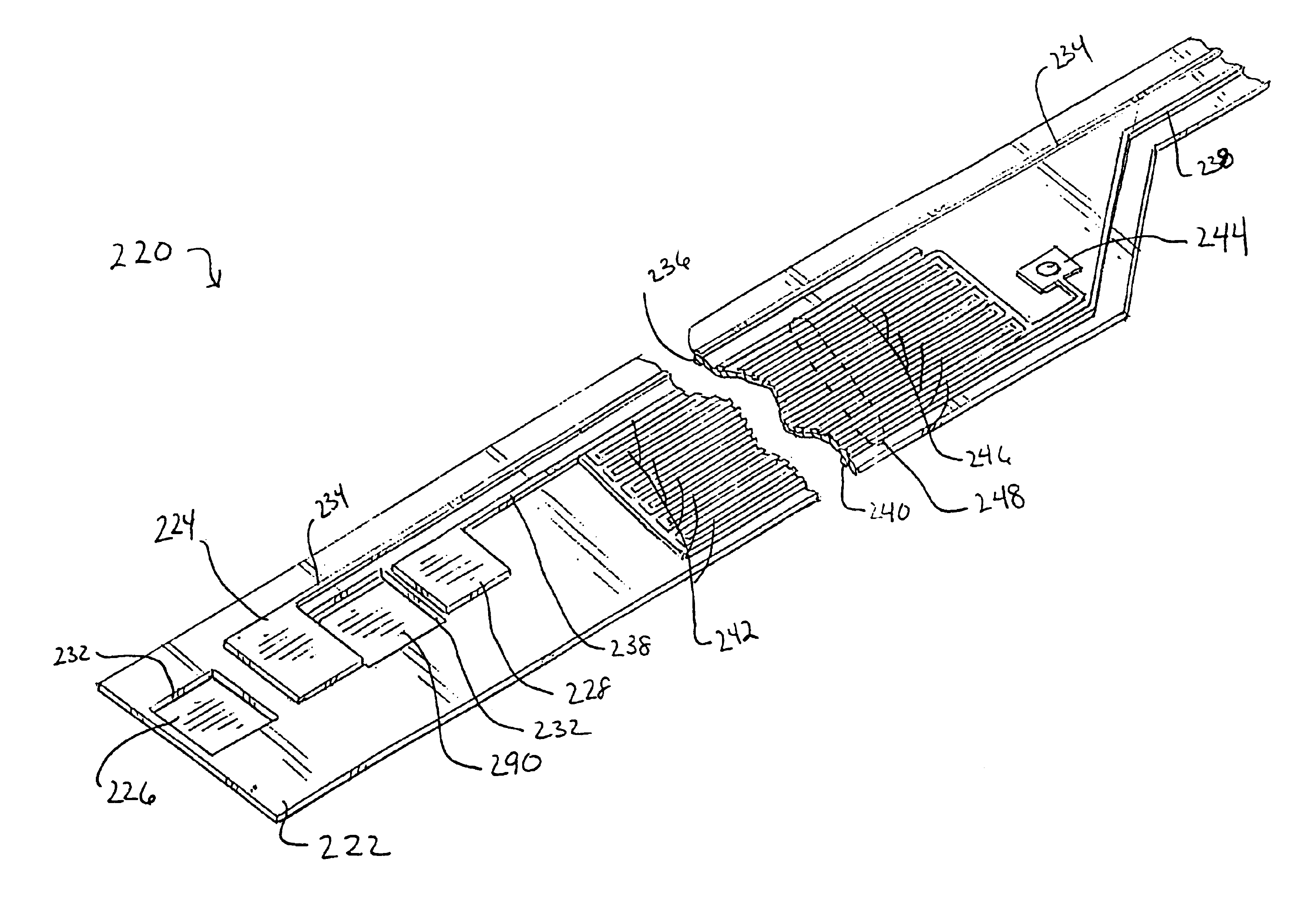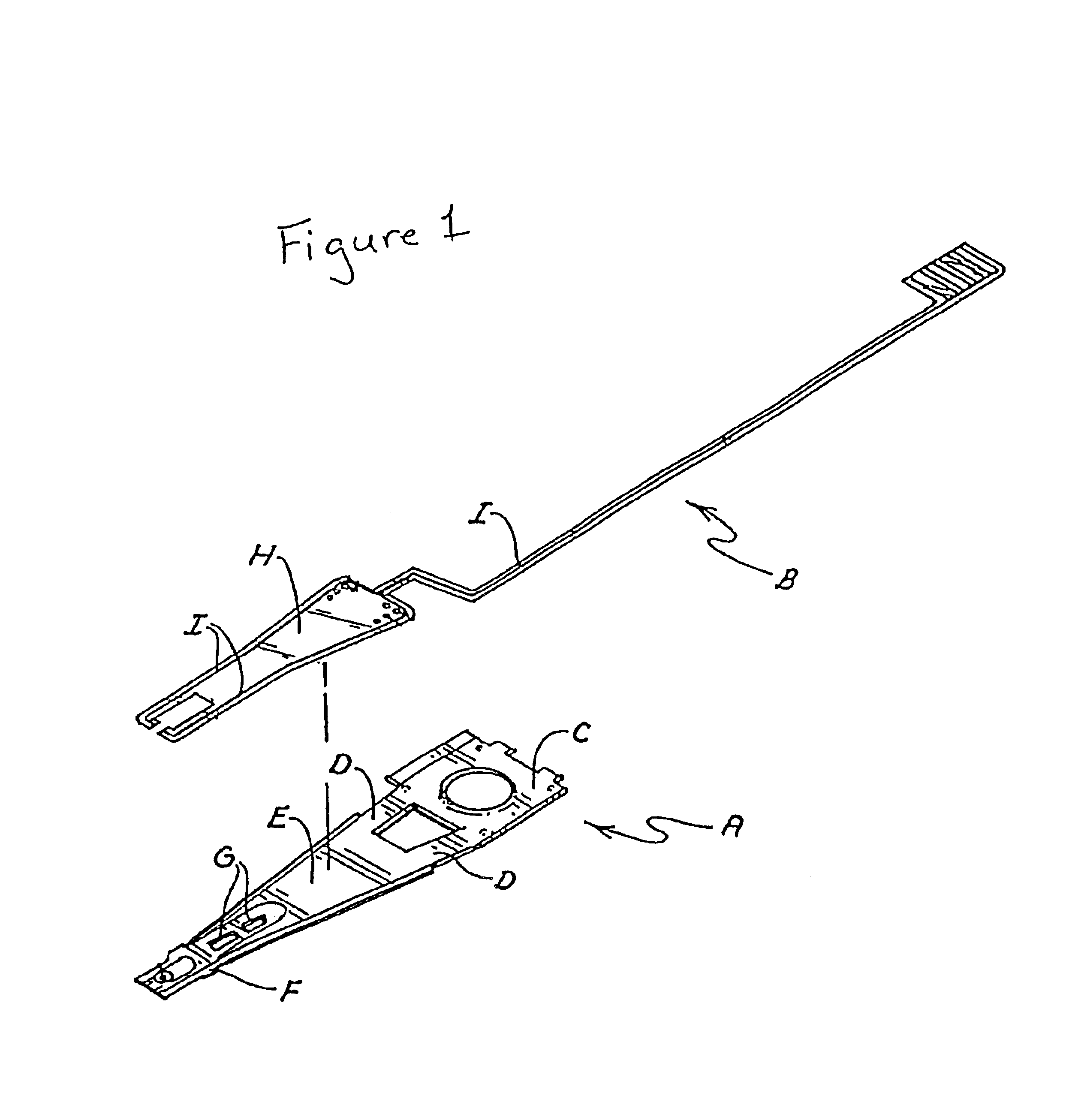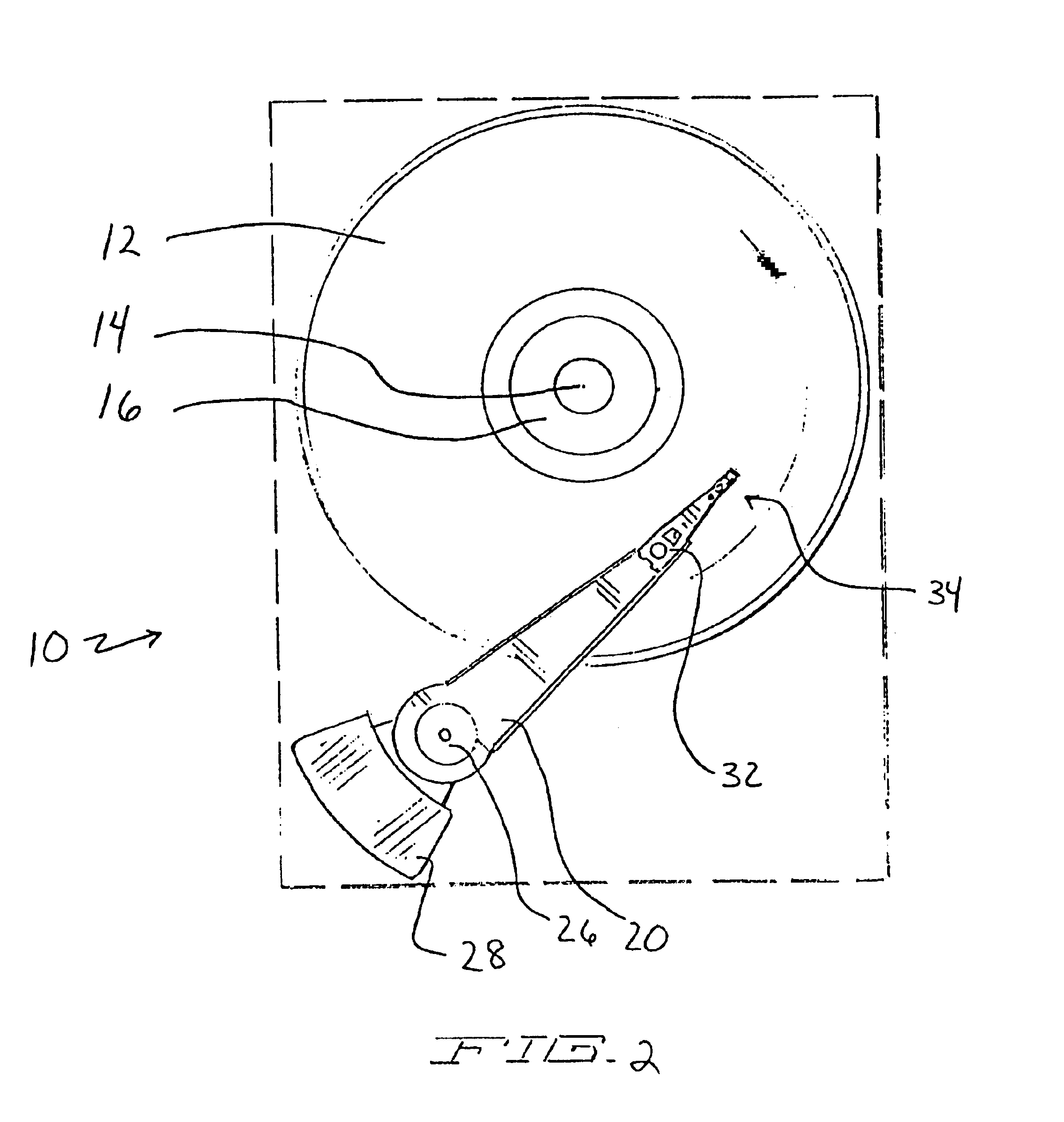Electrical component and a shuntable/shunted electrical component and method for shunting and deshunting
a technology of electrical components and electrical components, applied in the direction of circuit electrostatic discharge protection, record information storage, instruments, etc., can solve the problems of increasing the risk of damage to electrical components, esd/eos damage the damage to electrical components is a particular problem, so as to reduce or prevent esd/eos damage, the effect of reducing or preventing esd/eos damag
- Summary
- Abstract
- Description
- Claims
- Application Information
AI Technical Summary
Benefits of technology
Problems solved by technology
Method used
Image
Examples
embodiment 160
Another embodiment 160 of an interconnect in accord with the present invention is illustrated in FIG. 11. The interconnect 160 includes a substrate 162 that supports a plurality of leads 164. It will be observed that the interconnect 160 includes a terminal end 166 defining a tear-away or shearable portion 168 and an electrical connect portion 170. Terminal end 166 includes a plurality of temporary, tear away or shearable shunt electrical pads 172 and a corresponding plurality of permanent electrical connection pads 174 electrically connected by a similar corresponding plurality of tear-away or shearable leads 176. Like the connection pads 174, the shunt electrical pads 172 are supported upon a substrate that produces a conductive surface area when exposed to a radiant energy source. Thus the surface areas 178 between the shunt pads 172 can be made electrically conductive. The terminal end 166 also includes a through hole 180 underlying the tear-away leads 176. Thus, with this embod...
PUM
 Login to View More
Login to View More Abstract
Description
Claims
Application Information
 Login to View More
Login to View More - R&D
- Intellectual Property
- Life Sciences
- Materials
- Tech Scout
- Unparalleled Data Quality
- Higher Quality Content
- 60% Fewer Hallucinations
Browse by: Latest US Patents, China's latest patents, Technical Efficacy Thesaurus, Application Domain, Technology Topic, Popular Technical Reports.
© 2025 PatSnap. All rights reserved.Legal|Privacy policy|Modern Slavery Act Transparency Statement|Sitemap|About US| Contact US: help@patsnap.com



